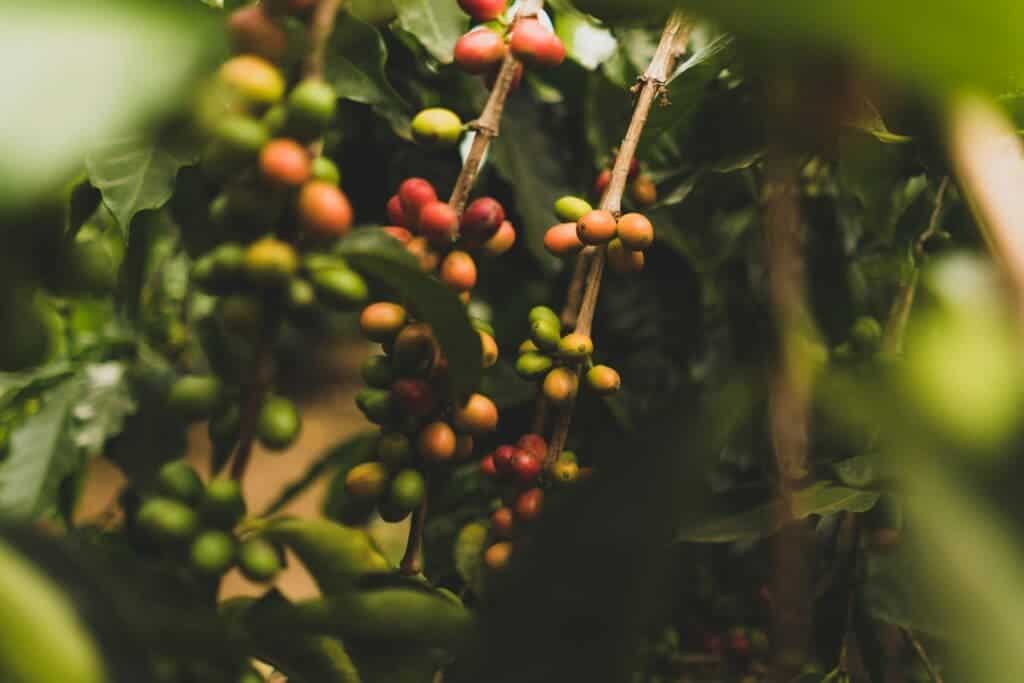Shade-grown coffee was a bird’s paradise until sun operations started stealing the show. Birds such as orioles, tanagers, warblers are missing out on trees, their very canopy for survival. Alas, many birdwatchers are clueless when it comes to the important connection between coffee-growing and birds’ survival.

Just like there are two types of coffee (Arabica and Robusta), there are two ways of growing coffee: sun-grown and shade-grown. Shade-grown coffee is the traditional approach, the way coffee grows naturally, under the forest canopy. But in the 1970s, things started to change.
A group of farmers had an idea to grow coffee in the sun as a way to increase production. It worked, in one sense: the yield really did increase, and farmers got a higher profit. But it came at a cost to the environment. In Central America, for instance, sun cultivation of coffee has led to a 2.5 million acre loss of forest, with native animals paying the price. But many consumers are completely unaware of this.
A new study reports that even among conservation-minded bird lovers seem, a large proportion are completely unaware. Researchers from the Cornell Lab of Ornithology and Virginia Tech asked birdwatchers if they drank shade-grown coffee. The team reported their findings in the British Ecological Society’s People and Nature.
You’d hope that birdwatchers, of which there are 45 million in the US alone, are well-informed about the environmental challenges faced by birds. They’re also among the group expected to be most interested in environmental certifications like Fairtrade or Rainforest Alliance. The researchers, however, found confusion among those asked about what certifications exist, where to buy bird-friendly coffee, and how coffee production impacts bird habitats.
“The highest rated constraints on buying bird‐friendly coffee were lack of awareness, cost, and lack of availability,” the researchers noted in the journal article.
Before we even dare to grind them down, however, it should not be hard to argue that many people know little to nothing about the links between birds and shade-grown coffee.
The Cornell Lab of Ornithology is more than ready to fill in the blanks.
No place to fuel
Coffee, when grown under a canopy of trees supports birds attracted to all the insects, nectar, and fruit that the trees provide. It’s not just the birds: the whole environment stands to benefit, including nearby farmers. The shade-grown farm trees prevent erosion and landslides, improve water quality, and contribute nutrients to the soil.
Now that much of the shaded coffee has been converted to sun coffee, this reduces erosion prevention, landslide prevention, and carbon storage. By 2010, only an estimated 24% of the world’s coffee was managed with traditional shade‐grown practices, the research paper noted. “Sun” coffee farms are intensively managed, said the authors, and usually associated with high use of fertilizers and pesticides.
For birds, however, these trees are particularly important. Birds need the energy to migrate and they lay down the energy in the form of fat deposits, using typically putting on a lot of fat before embarking on long flights. They also need to find high-quality habitats, said a researcher in a related video, and without the lush forests of shade-grown coffee, everything is much harder for them.
Over the years, said Amanda Rodewald, a professor and director of the Center for Avian Population Studies at the Cornell Lab, “most of the shade coffee in Latin America has been converted to intensively managed row monocultures devoid of trees or other vegetation.” Bird migration and breeding have suffered.
The bird-and-coffee research group feel that birdwatchers, by supporting more sustainable products, could be of help to these environments. Authors think that bird watchers would benefit from a better understanding of what coffee certifications are, what bird‐friendly coffee is, and the impact coffee production has on migratory bird habitats.
“We know birdwatchers benefit from having healthy, diverse populations of birds, and they tend to be conservation-minded folks,” said Assistant Professor Ashley Dayer. “We need to mobilize the estimated 45 million U.S. bird enthusiasts to help limit bird population declines. One way to do that is to encourage birdwatchers to seek out and purchase bird-friendly coffee, in stores and online.”
One case in point would be the “Bird Friendly” certification which Smithsonian scientists created. This means that one is drinking coffees grown underneath shade trees that provide bird habitats. Most Bird Friendly coffees are grown in the highlands of Latin American countries from Mexico to Peru.






